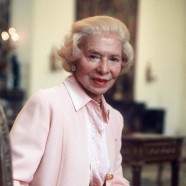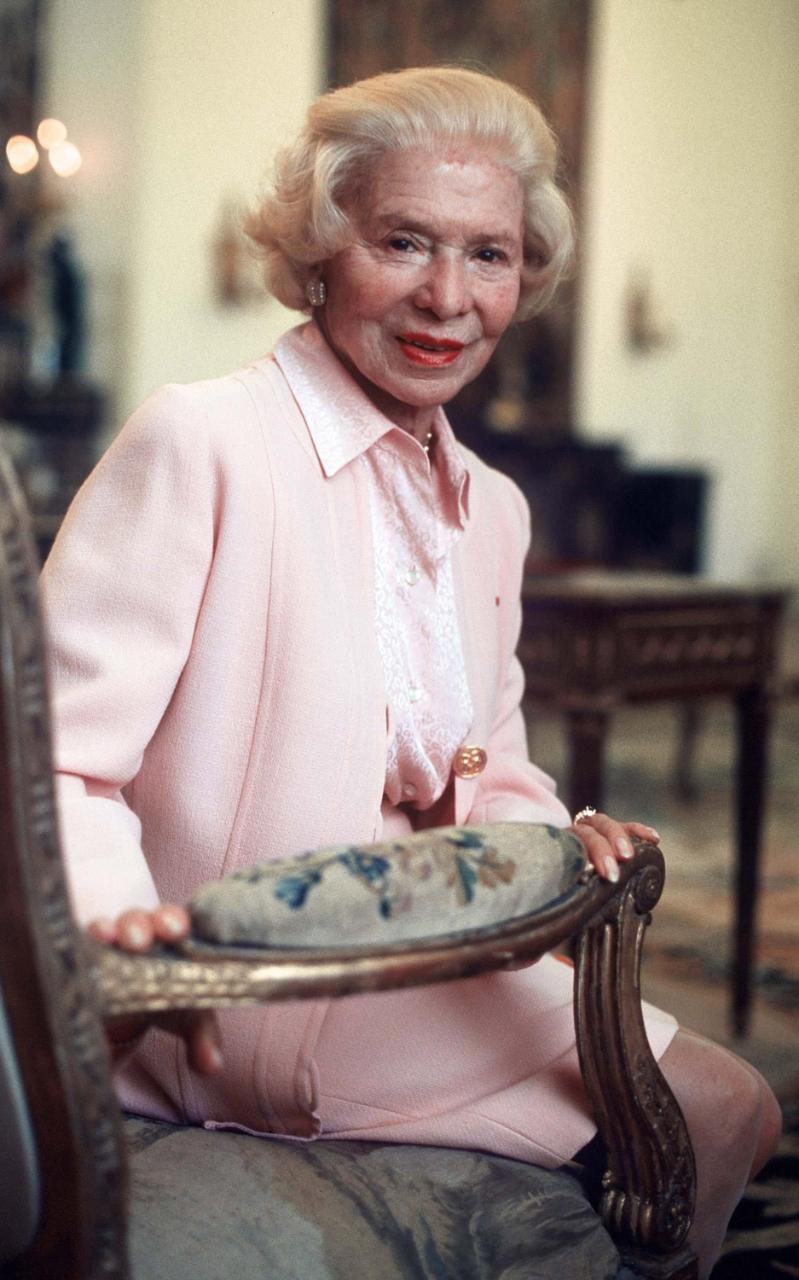Remembering Madame Carven, The Doyenne of French Design
Madame Carven, founder of the namesake French fashion house who passed away earlier this month was an icon, pioneer and a visionary whose legendary career spanned almost four decades.
Born Carmen de Tommaso in 1909 at Chatelleraut, central France, the 5’1″ couturier helped shape French fashion during the post-World War II era in Paris. With a background in Architecture and Interior Design at the Ecole des Beaux-Arts in Paris, she made her foray into the haute couture world with the desire to design for petite women like herself. Journalist Lucien Francois nicknamed her “smallest of the great couturiers”. “I decided to make haute couture outfits in my size because I was too short to wear the creations of the top couturiers, who only ever showed their designs on towering girls, but I wanted to retain my style — sober, practical and young, with a lot of sports garments.” she remarked in 1950.
Having first attempted to start her business in 1938 she established her maison at the Rond Pont des Champs-Elysses in 1945. The name Carven was created by combining the first half of her own name, Carmen, with the surname of her aunt, Josy Boyriven. Her ready-to-wear line became famous due to its simple and elegant wearable style making her one of Paris’ leading designers. Her clients included the likes of stars of the era Edith Piaf, Michele Morgan, Cecile Aubry and Leslie Caron and she soon joined the ranks of fellow contemporary female couturiers Coco Chanel and Elsa Schiaparelli.
The sports and leisure wear repertoire of Carven’s reflected deeply her love of sporty simplicity with Parisian elegance such that it paralleled the work of contemporary American designers, such as Tina Leser and Claire McCardell. Having achieved mainstream success, she went on to design costumes for films including “Les Diaboliques,” starring Simone Signoret and her designs are believed to have inspired the costumes in Alfred Hitchcock’s Vertigo and Rear Window. Carven patented today’s popular push-up bra, which she originally designed to be worn with bustier gowns, an idea she developed with lingerie designer Marie-Rose Lebigot.
Carven was also a skilled marketer with a keen business sense and talent for public relations and was vastly ahead of her time and her peers. A well known jetsetter, she found inspiration for her collections while traveling the world and was one of the first designers to use African and Indian motifs in her work. Carven’s spring 1949 collection and Paris show was inspired by a trip to Africa. In 1946 she launched her perfume, “Ma Griffe,” a flowery perfume with overtones of gardenia and jasmine and to celebrate the 10th anniversary of the Liberation of Paris arranged for samples of the fragrance to be air-dropped via tiny parachutes over Paris. When “Gone With the Wind” was released in France in 1950 (11 years after its U.S. release), she put out a line of crinoline dresses inspired by the film and organized a series of fashion shows at movie theaters.
With the aim of producing ready-to-wear collections that could be exported, or licensed for production overseas she started an initiative with several French designers namely; Jacques Fath, Robert Piguet, Jean Desses, Jeanne Paquin and Pierre Balmain. Besides being one of the first of couturiers to launch a pret-A -porter collection, Carven was one of the early proponents of the concept of stage runway shows. She staged shows around the world in five continents that included exotic destinations including Singapore, Cuba, Brazil, Mexico, Thailand, Indonesia Morocco and Egypt to promote her brand and its collections. In 1955 she launched Carven Junior along with a series of licensing deals. At the start of the ’60s she was designing outfits for the Air Hostesses and Stewards of nearly 20 major airlines including Air France and was commissioned by the city of Paris in 1977 to dress its female traffic wardens. Her uniform division also catered to the French team at the 1976 Olympics, and Eurostar staff. Following the death of her first husband Philippe Mallet in 1966, she married Swiss businessman and renowned antiques collector Rene Grog in 1972.
As the market for ready-to-wear and accessories for men and women developed rapidly Carven later expanded into fragrances and accessories launching several perfumes, including Eau Vive and Vetiver, the latter which was the most popular fragrance for Men and inspired by her husband Philippe Mallet. She also created the first collection of Men’s Silk Neckties and the first Carven Costume Jewellery collection. During the 1980’s as Golf became more and more popular in France a line of Carven Golfwear for men and women was created. Carven was also a prolific bridal designer and dressed famous brides such as Anne-Aymone Giscard d’Estaing, the future First Lady of France.
The brand Carven built became synonymous with the rise of contemporary French fashion and the Carven house became an exporter of elegance and French culture. Its presence in southeast Asia became strong, particularly Japan with Japanese women finding the cut and comfort of the Carven style very much to their liking. Carven continued designing until she was 84 (her retirement was in 1993) and in 2008 the Carven house was re-branded with the hiring of Guillaume Henry which saw the reissue of the Ma Griffe perfume. After Henry’s departure Alexis Martial and Adrien Caillaudaud took the helm of the label and continue her legacy of elegance and luxury.
After the death of her second husband in 1981, Carven founded an association Grog-Carven, to support rising talents by providing grants to students in the field of decorative arts. In 2009 as she celebrated her centenary year, she was made Commander of the Legion of Honor, France’s highest civilian distinction in a stylish party that was held at the Palais Galliera fashion museum in Paris. With her sunny disposition and warm personal touch she had the continuing talent for branding herself as a distinctive designer. She was the doyenne of a generation that made her one of the rare women couturiers in Paris and will surely be remembered, as will her impact on the world of Fashion.
By
Clinton









